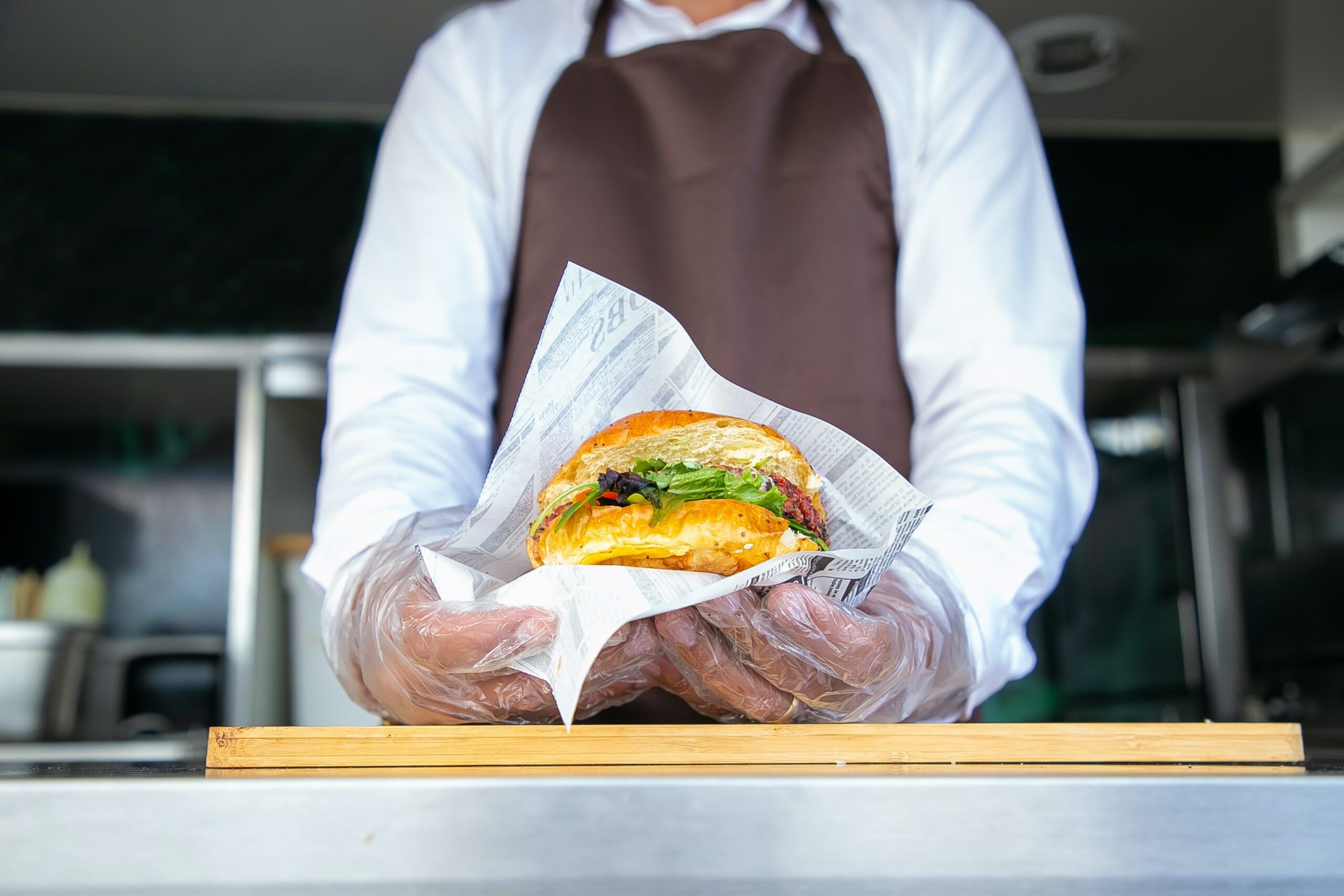- Importance of Managing Restaurant Expenses
- Top 8 Cost-Saving Strategies to Implement in Your Restaurant Business
- Position Your Restaurant for Growth and Profitability
Running a successful restaurant requires a delicate balance of culinary expertise, exceptional service, and effective financial management.
While creating an enticing menu and ensuring customer satisfaction are vital components, keeping a close eye on the restaurant’s expenses is equally important.
By implementing smart strategies to cut costs without compromising on quality, restaurant owners and managers can maximize profits and create a sustainable business model.
In this article, Orders.co will explore some of the top strategies that restaurants can employ to minimize expenses while maintaining high standards. Whether you’re a new or experienced restaurant owner or manager, these tips can help you improve your bottom line and grow your business over time!
Importance of Managing Restaurant Expenses
Managing restaurant operating expenses is of paramount importance for the success and profitability of your establishment. By effectively controlling and reducing expenses, you can create a solid financial foundation for your restaurant. Here are some key reasons why managing restaurant expenses is crucial:
Profitability
By keeping a close eye on expenses, you can ensure that your revenues exceed your costs, leading to a healthier bottom line.
Effective expense management directly contributes to maximizing profits, allowing you to invest in growth opportunities or improve other areas of your business.
Sustainability
Running a restaurant is a long-term endeavor and sustainable financial practices are vital for its survival.
When you manage expenses wisely, you can avoid excessive debt, maintain healthy cash flow, and build a solid financial cushion to weather unexpected challenges or economic downturns.
Competitive Advantage
In a fiercely competitive restaurant industry, efficient expense management can give your restaurant a competitive edge.
By reducing costs, you can offer competitive pricing while maintaining quality, attracting more customers, and outperforming competitors who may struggle with higher expenses.
Investment Opportunities
By keeping expenses in check, you free up financial resources that can be invested in key areas of your business.
Whether it’s upgrading equipment, renovating your space, or training staff, managing expenses allows you to allocate funds strategically and make necessary investments for growth and improvement.
Adaptability
As consumer preferences and market trends evolve, your restaurant needs to adapt to stay relevant.
Effective expense management provides the flexibility to respond to changing demands. By keeping costs under control, you can more easily adjust your menu, experiment with new concepts, and invest in innovation without jeopardizing your financial stability.
Top 8 Cost-Saving Strategies to Implement in Your Restaurant Business
Running a successful restaurant requires a delicate balance between providing exceptional dining experiences and managing operational costs.
With rising food prices, increasing labor costs, and ever-growing competition, it becomes crucial for restaurant owners and managers to implement effective strategies to reduce expenses while maximizing profits.
Here are eight unique and well-explained strategies that can help restaurants optimize their financial performance without compromising on quality.
Streamline Menu and Inventory Management
Menu and inventory management are crucial for reducing restaurant expenses and maximizing profits.
Analyzing your menu offerings and identifying items that are not selling well or have a high ingredient cost can help you optimize your inventory costs, reduce food waste, and improve overall profitability.
To streamline menu management, you need to focus on quality over quantity. Offering a smaller menu with high-quality ingredients can help you maintain consistency and reduce food costs. Additionally, consider using seasonal ingredients to take advantage of lower prices and better quality.
For effective inventory management, you need to implement a system that tracks ingredient usage and waste. This may help you avoid overstocking or understocking ingredients, which can lead to spoilage, waste, and increased expenses.
You can also negotiate with suppliers to get better prices on bulk orders of ingredients that you use frequently, reducing the overall cost of goods sold.
Your Inbox, Your Rules!
Tailor your newsletter with the topics you're most interested in.
Negotiate with Suppliers
Suppliers play a vital role in the success of a restaurant business. Building strong relationships with suppliers may lead to better pricing and cost savings. Negotiating with your suppliers to get the best possible prices for ingredients, beverages, and other supplies is an effective way to reduce restaurant expenses.
To negotiate effectively with suppliers, you need to be well-informed about market prices and your specific needs. Research the prices of ingredients and supplies from different suppliers and compare them to get the best deal.
You may also consider forming partnerships with local farmers or vendors to source fresh, high-quality ingredients at lower prices.
Implement Effective Staff Training
Well-trained staff can increase efficiency, reduce errors, and ultimately save money. Investing in comprehensive training programs that educate your employees about proper portion control, food handling procedures, and efficient service techniques is essential for reducing restaurant expenses.
To implement effective staff training, you need to create a culture of continuous learning and improvement. This may be achieved by conducting regular training sessions, providing feedback and coaching, and setting clear expectations for performance.
In addition, incentivize your employees to adopt cost-saving practices, such as reducing food waste, by offering rewards or recognition for their efforts.
Control Utility Expenses
Utility expenses, such as electricity, water, and gas, can significantly impact a restaurant’s bottom line.
Implementing energy-saving measures such as installing energy-efficient lighting, using programmable thermostats, and regularly maintaining kitchen equipment to ensure optimal performance is an effective way to reduce utility expenses.
To control utility expenses, you need to create a culture of energy efficiency. This may be achieved by educating your staff about the importance of conserving energy, implementing energy-saving measures, and monitoring utility bills to identify areas of improvement.
Consider using renewable energy sources such as solar panels to reduce your carbon footprint and lower utility costs.
Optimize Labor Costs
Labor costs typically represent a significant portion of a restaurant’s expenses. Carefully analyzing your staffing needs and ensuring that you have the right number of employees scheduled at all times is essential for reducing labor costs.
To optimize labor costs, you need to create an efficient staffing schedule. This can be achieved by using employee scheduling software that helps you manage shifts efficiently and avoid overstaffing during slow periods.
Cross-training your employees to handle multiple tasks, reducing the need for additional staff, and increasing productivity is also an effective way to optimize labor costs.
Utilize Technology Solutions
Incorporating technology into your restaurant operations can help streamline processes and save costs.
Investing in a reliable point-of-sale (POS) system that integrates inventory management, order tracking, and customer data analysis is an effective way to reduce restaurant expenses.
To utilize technology solutions effectively, you need to choose the right tools for your specific needs. This can be achieved by assessing your business requirements, identifying areas of improvement, and selecting technology solutions that can address those needs.
In addition to POS systems, consider implementing online ordering and delivery services. With the growing trend of food delivery, providing customers with the convenience of ordering online can expand your customer base and increase revenue streams.
Partnering with third-party delivery platforms or establishing your own delivery service can help you reach a wider audience without high overhead costs.
Opt for Cost-Effective Marketing Strategies
Marketing is essential for attracting customers and increasing revenue, but it doesn’t have to break the bank. Instead of relying solely on traditional advertising methods that can be costly, explore cost-effective marketing channels to promote your restaurant.
Social media platforms offer a powerful and affordable way to engage with your target audience. Create captivating content that showcases your menu items, behind-the-scenes moments, and customer testimonials.
Encourage user-generated content by running contests or offering incentives for customers to share their experiences on social media. This not only increases your online visibility but also builds brand loyalty and word-of-mouth promotion.
Email marketing is another cost-effective strategy to stay connected with your customers. Collect customer email addresses through loyalty programs or online reservations and send them regular updates, promotions, and exclusive offers. Personalize the content to make it relevant and engaging, increasing the chances of repeat business and customer retention.
Consider partnering with local influencers or micro-influencers who align with your restaurant’s brand and target audience. These individuals can help create buzz and generate awareness through sponsored posts or collaborations. By leveraging their followers and influence, you can reach a larger audience at a fraction of the cost of traditional advertising.
Analyze Financial Reports Regularly
To effectively manage expenses and maximize restaurant profits, regular analysis of your financial reports is essential. It provides valuable insights into your restaurant’s performance, identifies areas of improvement, and helps you make informed decisions.
Review key financial indicators such as food cost percentage, labor cost percentage, and overall profitability.
Compare these metrics against industry benchmarks to assess your performance and identify any deviations that require attention. Dig deeper into the data to pinpoint specific cost drivers and areas where you can implement cost-saving measures.
Identify trends in customer preferences, popular menu items, and peak hours to optimize your inventory management and staffing schedules. This data-driven approach ensures that you are allocating resources efficiently, reducing waste, and maximizing profitability.
Position Your Restaurant for Growth and Profitability
In the realm of the culinary world, where passion meets business, the pursuit of profitability can be as tantalizing as the most exquisite dish. Yet, success lies not only in culinary mastery but also in the art of expense management.
By embracing innovative strategies, restaurant owners can savor the sweet taste of maximizing profits while maintaining the essence of their culinary vision. From mindful menu engineering to embracing technology, these top strategies pave the path to reduced expenses and an abundance of success.
So, let the kitchen be your laboratory, creativity your secret ingredient, and these strategies your guiding recipes as you embark on a journey to culinary and financial triumph.



